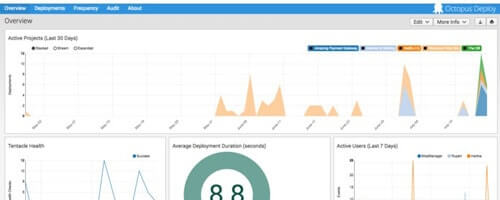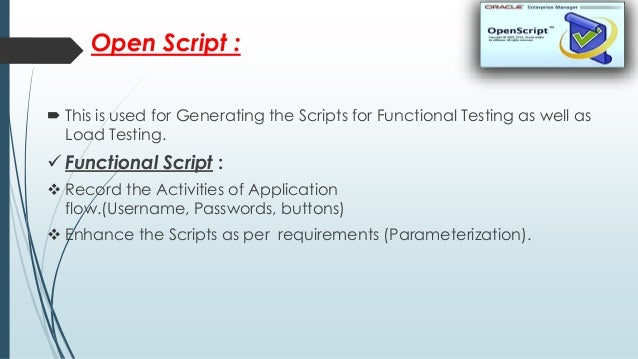Best Open Source CRM Software for Workflow Automation: X2CRM. X2CRM is open source CRM software for marketing, sales, and customer service featuring an easy-to-use workflow engine and process management tools for complicated automation as well as website insights. It is offered a free on-premise desktop application, a browser-based cloud. OpenHAB (short for Open Home Automation Bus) is one of the best-known home automation tools among open source enthusiasts, with a large user community and quite a number of supported devices and integrations. Written in Java, openHAB is portable across most major operating systems and even runs nicely on the Raspberry Pi.

.To achieve faster application delivery, the right tools must be used in DevOps environments. There is no single tool which fits all your needs such as server provisioning, configuration management, automated builds, code deployments, and monitoring. Many factors determine the use of a particular tool in your infrastructure. In this article, we will look into core tools which can be used in a typical DevOps environment. DevOps Tools for Infrastructure AutomationThere are many tools available for infrastructure automation. Which tool to be used is decided by the architecture and needs of your infrastructure.
We have listed a few great tools below which come under various categories like configuration management, orchestration, continuous integration, monitoring, etc,We have categorized the toolsets in to the following. Infrastructure as Code. Continuous Integration/Deployment. Config/Secret Management. MonitoringInfrastructure as CodeTerraform is an Infra provisioning tool which is cloud-agnostic.
It is created by Hashicorp and written in Go. It supports all public and private cloud infrastructure provisioning.
Unlike other configuration management tools, terraform does a great job in maintaining the state of your infrastructure using a concept called state files.You can in days as it is easy to understand. Terraform has its own DSL called HCL (Hashicorp configuration language). Also, you can write your own terraform plugin using golang for your custom functionalities. If you a beginner, you can get started with Terraform using. You can get all the community terraform modules fromis agent-less configuration management as well as an orchestration tool. In Ansible, the configuration modules are called “Playbooks”.
Playbooks are written in YAML format and it is relatively easy to write when compared to other configuration management tools. Like other tools, Ansible can be used for cloud provisioning. You can find all community playbooks fromChef is a ruby based configuration management tool. Chef has the concept of cookbooks where you code your infrastructure in DSL (domain-specific language) and with a little bit of programming. Chef provisions virtual machines and configures them according to the rules mentioned in the cookbooks.An agent would be running on all the servers which have to be configured. The agent will pull the from the chef master server and runs those configurations on the server to reach its desired state.
Varuthapada valibar sangam full movie download free. The frames were technically more refreshed and I’m sure anyone would look the best in his frames. How he protected his people from the clutches of Bhima?His jokes worked out well in the film.First half ends with a big twist 2md half – Movie becomes serious.
You can find all the community cookbook fromYou might like:Puppet is also a ruby based configuration management tool like chef. The configuration code is written using puppet DSL’s and wrapped in modules. While chef cookbooks are more developer-centric while puppet is developed by keeping system administrators in mind.Puppet runs a puppet agent on all server to be configured and it pulls the compiled module from the puppet server and installs required software packages specified in the module.You can find all community Puppet Modules fromSaltstack is a python based opens configuration management tool. Unlike chef and puppet, Saltstack supports remote execution of commands.

Open Source Automation Tools

Normally in chef and puppet, the code for configuration will be pulled from the server while, in Saltstack, the code can be pushed to many nodes simultaneously. The compilation of code and configuration is very fast in Saltstack.
Continuous Integration/Deploymentis a java based continuous integration tool for faster delivery of applications. Jenkins has to be associated with a version control system like GitHub or SVN. Whenever new code is pushed to a code repository, Jenkins server will build and test the new code and notifies the team for with the results and changes.You Might Like:Jenkins is not just a CI tool anymore. Jenkins is been used as an orchestration tool by for the application provisioning and deployment. Its new pipeline as code functionality lets you keep the CI/CD pipelines as a complete code.Vagrant is a great tool for configuring virtual machines for a development environment.
Vagrant runs on top of VM solutions like VirtualBox, VMware, Hyper-V, etc. It uses a configuration file called Vagrantfile, which contains all the configurations needed for the VM.
Open Source Home Automation Software
Once a virtual machine is created, it can be shared with other developers to have the same development environment. Vagrant has plugins for cloud provisioning, configuration management tools (chef, puppet etc,) and Docker.on the concept of process-level virtualization. Docker creates s called containers. These containers can be shipped to any other server without making changes to the application. Docker is considered to be the next step in virtualization. Docker has a huge developer community and it is gaining huge popularity among in cloud computing.
Config/Secret Managementis an opensource highly-available key-value store. It is mainly used for service discovery purposes. If you have a use case to store and retrieve configurations in real-time, consul is the right fit.is another opensource key-value store created by the CoreOS team. It is one of the key components used in Kubernetes for storing the state of cluster operations and management.vault is an open-source tool for. It provides many functionalities to store your secret key in an encrypted way.
You can create ACLs, policies, and roles to manage how the secrets will be accessed by end-users. MonitoringPrometheus is an open-source monitoring system. It is very lightweight and specifically built for modern application monitoring.
It supports andIt has out of the box support for Kubernetes and Openshift monitoring. Alert manager manages all the alerting set up for the monitoring metrics.New Relic is a cloud-based (SaaS) solution for application monitoring. It supports monitoring of various applications like Php, Ruby, Java, NodeJS etc. It gives you real-time insights about your running application. A new relic agent should be configured in your application to get the real-time data.
New relic uses various metrics to provide valuable insights about the application it is monitoring.Sensu is an open source monitoring framework written in Ruby. Sensu is a monitoring tool specifically built for cloud environments.
It can be easily deployed using tools like chef and puppet. It also has an enterprise edition for monitoring.Datadog is also a cloud-based (Saas) application and server monitoring solutions. You can and other applications using Datadog.Other tools worth considering,. Riemann (Open Source Monitoring Tool).
AppDynamics (For application monitoring). Logz.io (For log analysis and management).
ELK stack (Elasticsearch, Logstash, Kibana). Splunk (Log analysis and alerting)ConclusionInfrastructure automation is a requirement for every DevOps teams. Usage and selection of a tool depend on factors like cost, skillset, functionality, etc.Again one tool will not definitely fit your needs. Selection of toolsets should be based on the organization’s/team requirements rather than the functionality of the tool.So what tools are you using for infrastructure automation?
This post is frequently updated. Last updated: 14 Jun, 2019Although the demand for desktop app testing is not growing as fast as mobile and web app testing, it’s still a crucial day-to-day duty of many testers, especially those who work on sophisticated legacy systems in complex enterprise environments.
Ignoring desktop app automation is simply a luxury that those testers can’t afford.Desktop applications are computer programs that must be installed, configured and executed on a desktop operating system such as Windows, Linux and macOS. End-users need a desktop computer or laptop with sufficient hardware resources to access the functionalities of these apps.Common technologies to build desktop apps include Java(Swing, AWT, SWT, JavaFX),.NET (UWP, WPF, WinForms, VB.NET), Windows API(win32), GDI, MFC, Visual Basic, Visual C, PowerBuilder, SAPGUI, OracleForms, Telerik, DevExpress, Infragistics, Xlib, Cocoa, etc.This article lists out the best automation tools to automate functional testing for desktop apps. If you’re looking for a tool that fits your specific needs, this list is definitely helpful for you to explore, evaluate, compare and eventually adopt the best tool for your automation needs.NOTE:.
The tools are not ranked. You may notice that many of the tools on the list are commercial. This isdue to the complex nature of automating desktop apps. Most tools thatare able to automate desktop apps are usually proprietary, and there arelimited open-source options.Standard CriteriaWhen assessing the pros and cons of a specific tool, I usedthe following criteria. Figure 1 – WinAppDriver architectureis built on top of the WebDriver protocol – the gold standard for web & mobile app testing. You can use WinAppDriver to drive any Windows apps such as classic Windows controls (Win32), WPF, WinForms, and UWP using a wide variety of language bindings (C#, Java, Python, Ruby), and test runners (MSTest, JUnit, Nunit, etc.).